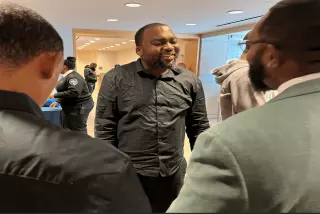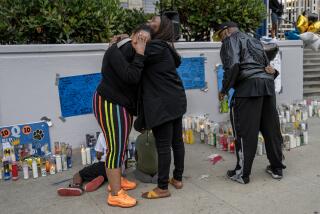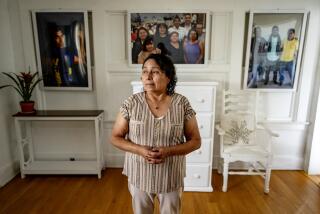Psychologist questioned in Oxnard teen’s murder trial
- Share via
The night before he killed Larry King, 14-year-old Brandon McInerney could think of nothing else.
It wasn’t enough that King, a troubled eighth-grader, had started coming to school in high heels and makeup.
For Brandon, who once told a sex education class that he would kill any man who tried to touch him, that alone was upsetting. But then there were the humiliations: On the basketball court and in the restroom, both times in front of classmates, Larry had asked Brandon to be his valentine — incidents that some found funny but Brandon found profoundly disturbing.
And now there was the last straw: Just that day, when King passed him in the hallway, he uttered what McInerney saw as a repulsive come-on: “What’s up, baby?”
What McInerney took as needling came at just the wrong time — after months of pressure to do better in school from his abusive, meth-addicted father. He later described King’s question as “super-disgusting.”
“I sat and I thought about it over and over,” he told psychologist Douglas Hoagland months after he shot King in a computer lab at E.O. Green Junior High in Oxnard. “It didn’t calm me down. It made me more angry. All I could think about was I wanted to kill him.”
McInerney’s internal monologue came out Monday in a Chatsworth courtroom as a prosecutor tried to shake the testimony of Hoagland, an expert for the defense in McInerney’s murder trial.
The lengthy proceeding, moved to Los Angeles County because of extensive publicity in Ventura County, is in its final stages and is expected to go to the jury this week or next.
Attorneys for McInerney, now 17 but being tried as an adult, are hoping the jury will be allowed to consider the killing as manslaughter rather than murder.
They have argued that McInerney was a bright kid driven over the brink by a long history of violence at home and, in the end, teasing from the victim, whose cross-dressing he saw as in-your-face provocation.
The Ventura County district attorney’s office has painted the defendant as calculating and callous, a budding white supremacist given to swastika doodles and, like his father and grandfather, rage against minorities.
On Feb. 12, 2008, after a night fuming over the perceived insult from King, McInerney left for school in a hurry — but came back to get his father’s loaded .22-caliber revolver, Hoagland testified.
He concealed it in a towel and stuffed it in his backpack. At school he stealthily withdrew the towel-wrapped gun and stuffed it into his pants.
He told Hoagland he had started to have second thoughts about killing King, who sat immediately in front of him.
But when he heard King telling a girl that he’d changed his name to Leticia, that changed.
“He snapped,” Hoagland said, and entered a “dissociative state” that lasted until he fled the classroom and was caught by police minutes later.
“It was a transient period of dissociation,” Hoagland said in response to skeptical questioning from prosecutor Maeve Fox.
After firing two bullets into King’s head, McInerney said he remembered hearing the teacher scream and seeing a pool of King’s blood, Hoagland said.
Fox scoffed at the explanation, describing it as McInerney entering “a state of semi-unawareness.” She cited testimony from fellow students that McInerney had told them of his intent to kill King.
When one of them asked McInerney whether he’d brought a gun to school, as he said he would, he lied and said he hadn’t. Not long afterward he fired the fatal shots.
More to Read
Sign up for Essential California
The most important California stories and recommendations in your inbox every morning.
You may occasionally receive promotional content from the Los Angeles Times.














